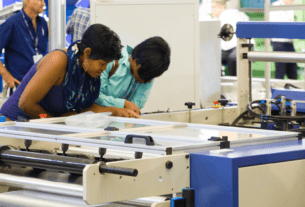The unpredictable ebb and flow of life’s challenges can unsettle even the strongest person. In a global survey (including 34 countries) conducted by Ipsos, stress was most prevalent in Argentina, Brazil, Chile, India, Mexico, Peru, Turkey and South Africa. More than 70% of respondents reported that, at least once in the previous year, they felt stressed to the point where it impacted their daily lives and where they felt they were unable to cope.
My own experience with adversity came from having to cope with my husband’s cancer diagnosis while raising two young children. But through these personal challenges, I realized that resilience is something any person can cultivate as a strategy in their own lives.
During my own personal journey (combined with my professional skills and experience), I recognised patterns which I’ve mapped to a broader blueprint to help others cope with their own challenging circumstances. Of course, my approach is not set in stone. Instead, people should view it as a guide that they can tailor to their individual circumstances, needs and personal preferences.
Below, are my seven principles which I believe can provide the foundation on which to build personal resilience:
1. Keep a routine. Having a daily routine can create a sense of normalcy and predictability amidst any chaos you are faced with. It can be rigid for some and more loose for others, but having a daily plan helps.
2. Check in with your mental mind at the beginning of your day. Cultivate mental resilience by setting one positive affirmation for the day and writing it down. Some examples include ‘I am smart’, ‘I am kind’, and ‘I am brave’. We all need a daily pick-up line and to set a positive attitude for the day.
3. Check in with your environment at the beginning of your day. Your immediate environment such as your workspace should be a sanctuary for productivity and calm, not a catalyst for chaos. Organise, declutter, and plan in order to get going. An organised and productive workspace will facilitate organised and productive productivity.
4. Check in with your physical body regularly. Use the metaphor of a traffic light to monitor and manage your physiological state, ensuring you begin each day in ‘green’ – calm, focused, and ready. Your body hosts your mind and brain and being self-aware of your daily state will set you up to know whether you need to be “down-turned” or “up-turned”. It is like having to fill your car with petrol. Your body needs to be calm, organised and rested in order to give you the best output.
5. Sensory self-regulation. Implement ‘sensory snacks’ – simple, quick strategies like deep breathing or touch input (for example, rubbing your hands together or having a stress ball on your desk) to help keep your brain organised. This will be utilising your body and your senses to facilitate and maintain a mental and physical state of presence and focus to be the baseline of your daily actions and productivity.
6. Check out with your physical body at the end of the day. Make sure that you clearly end your activity, learning or work-day. Being able to transition from one task or space to the next will help to prepare your mind. Be mindful to do this regularly. Close your computer. Close your door. Whatever physical action you need to do in order to indicate that you are done with one activity and ready for the next step will help. This is a mental health and resilience non-negotiable to transition from work-mind to family-mind. Supporting this through a physical-sensory action helps to “tell” the brain what is next. Your family should not get what is “left of you” but the “rest of you”.
7. Check out with your mental mind at the end of the day. End each day by documenting a moment of gratitude, grounding yourself in the present and the positive. Making a choice to be grateful and positive and learning to appreciate small blessings and victories will foster ongoing mental and physical resilience.
Even though these principles are not exhaustive, you should view them as a guide to helping you build a foundation for resilience going forward. In tough times, complexity can overwhelm, while simplicity acts as a beacon. We may not be in the same boat, but we navigate the same stormy waters. Seek strength in simplicity and steer towards calmer seas.





